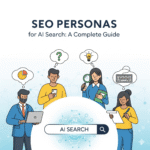Organic SEO has changed drastically over the past few years. What worked a decade ago—like keyword stuffing or spammy backlinks—will do more harm than good today. Modern SEO is smarter, user-focused, and data-driven.
If you want to rank in 2025 and beyond, you need to master the modern organic SEO secrets that top websites are using right now.
What is Modern Organic SEO?
Modern organic SEO is the process of optimizing your website so it appears naturally in search results without paid ads, focusing on quality, relevance, and user experience.
Unlike old SEO methods, today’s approach involves:
- Understanding user intent.
- Building topical authority.
- Optimizing for Core Web Vitals.
- Leveraging structured data.
- Creating content designed for both humans and algorithms.
The Modern Organic SEO Secrets
Here are the strategies that will help you rank sustainably:
1. Build Topical Authority with Clusters
Google now favors websites that demonstrate expertise across entire topics. Instead of publishing random posts, focus on building topic clusters.
- Create a pillar page that covers the main topic broadly.
- Develop supporting content targeting long-tail subtopics.
- Interlink them strategically for stronger authority.
🔑 Secret: Organize your site like a knowledge hub. Google rewards sites that act as go-to resources.
2. Optimize for EEAT (Experience, Expertise, Authoritativeness, Trust)
EEAT is at the heart of modern SEO. Google evaluates whether your content is trustworthy and expert-backed.
How to apply:
- Add author bios with credentials.
- Link to reliable sources and cite data.
- Use first-hand case studies or personal experience.
- Get featured on reputable sites to boost authority.
🔑 Secret: Websites with strong EEAT signals rank higher, especially for YMYL (Your Money, Your Life) topics.
3. Prioritize User Intent Over Keywords
Keyword density doesn’t matter anymore intent does. Every query has one of three main intents:
- Informational (learn something)
- Transactional (ready to buy)
- Navigational (looking for a brand/site)
🔑 Secret: Match your content format and tone to intent. Example: Use detailed guides for informational searches, product comparisons for transactional intent.
4. Master Semantic SEO
Google understands context, not just words. Semantic SEO involves covering a topic with related concepts and terms.
Best practices:
- Use LSI (Latent Semantic Indexing) keywords.
- Answer related questions within the same article.
- Optimize for People Also Ask (PAA) queries.
🔑 Secret: Semantic SEO increases your chances of ranking for dozens of keywords, not just one.
5. Technical SEO Excellence
Content alone won’t rank if your technical foundation is weak.
Checklist:
- Improve Core Web Vitals (speed, interactivity, stability).
- Ensure mobile-first indexing.
- Fix crawl errors and broken links.
- Use HTTPS for security.
- Maintain a clean XML sitemap.
🔑 Secret: Google rewards websites that load fast, work flawlessly on mobile, and deliver smooth UX.
6. Optimize for Featured Snippets
Featured snippets are prime real estate in search results.
Tips to win snippets:
- Use question-based headings.
- Answer in short, clear sentences (40–60 words).
- Use lists, tables, and bullet points.
🔑 Secret: Formatting content for snippets boosts CTR and visibility dramatically.
7. Leverage Structured Data
Schema markup helps Google understand your page context.
Examples:
- FAQ Schema → shows Q&A in results.
- How-To Schema → steps appear in search.
- Review Schema → star ratings displayed.
🔑 Secret: Rich results increase clicks and make your site stand out in SERPs.
8. Refresh and Repurpose Content
Google values freshness. Old, stale content loses ranking power.
Action steps:
- Update articles with new statistics and insights.
- Merge overlapping posts into a comprehensive guide.
- Repurpose blog posts into videos, infographics, or LinkedIn posts.
🔑 Secret: Consistently refreshed content outperforms static pages.
9. Voice Search Optimization
With smart assistants on the rise, voice search is critical.
How to optimize:
- Target natural, conversational long-tail keywords.
- Use FAQ pages to capture question-based queries.
- Provide direct answers.
🔑 Secret: Voice queries are longer optimize for phrases, not just single terms.
10. Focus on Engagement Signals
Google tracks how users interact with your site. High bounce rates hurt rankings.
Boost engagement by:
- Improving readability with shorter paragraphs.
- Using multimedia (videos, charts, images).
- Adding clear CTAs to guide next steps.
🔑 Secret: Engaged users send positive signals that improve rankings.
11. Build Natural Backlinks
Backlinks remain a strong ranking factor—but quality matters more than quantity.
Modern link-building methods:
- Guest posts on authority websites.
- HARO (Help a Reporter Out) pitches.
- Skyscraper technique (improving top-ranking content).
🔑 Secret: A handful of authoritative backlinks can outweigh hundreds of low-quality ones.
12. Optimize for Zero-Click Searches
More searches end without clicks because Google provides answers directly.
How to benefit:
- Create short definition-style answers.
- Use knowledge panels and snippets.
- Build brand visibility so users recognize your name.
🔑 Secret: Even if clicks are lower, being visible keeps your brand top of mind.
Best Practices for Modern Organic SEO
- Update your site regularly—Google rewards freshness.
- Always optimize for mobile-first.
- Write content that solves real problems, not just ranks.
- Track performance with GA4 and Search Console.
- Stay adaptable—SEO evolves every few months.
Conclusion
Modern organic SEO is not about chasing algorithms it’s about understanding users and aligning with Google’s goals. By focusing on topical authority, EEAT, technical health, semantic optimization, and engagement, you can future-proof your site and rank sustainably in 2025.
These are the real secrets that separate average websites from top performers. Apply them consistently, and you’ll see steady growth in organic visibility and conversions.
Discover more from PratsDigital
Subscribe to get the latest posts sent to your email.


